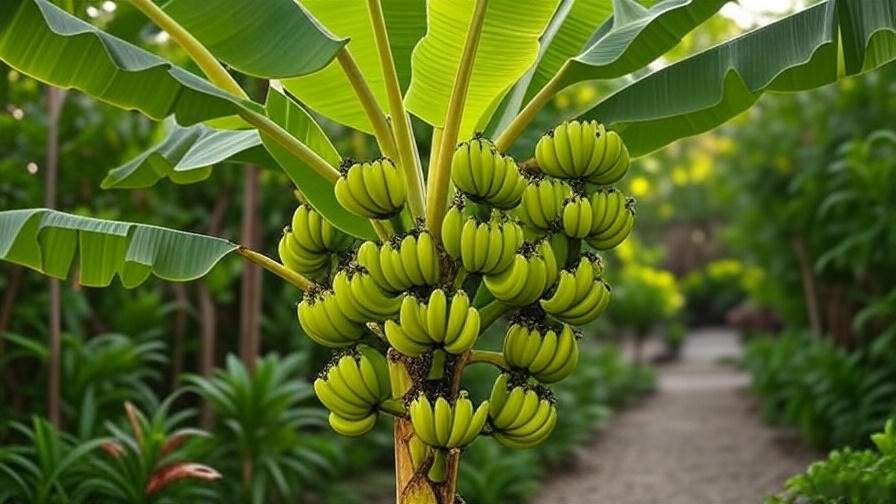Imagine stepping into your backyard and being greeted by the lush, tropical allure of a Musa banana tree, its vibrant green leaves swaying gently and clusters of sweet bananas ripening in the sun. Whether you’re a seasoned gardener or a beginner dreaming of a tropical oasis, growing a Musa banana tree is easier than you think! This guide delivers seven expert-backed tips to help you plant, care for, and harvest a thriving Musa banana tree, transforming your garden into a paradise. Backed by years of horticultural experience, this comprehensive article addresses every aspect of Musa care, ensuring success even in challenging climates. Let’s dive into the world of tropical gardening and unlock the secrets to a flourishing banana tree! 🍌
Why Choose a Musa Banana Tree for Your Garden? 🍌
The Allure of Musa Banana Trees
Musa banana trees, belonging to the Musaceae family, are prized for their fast growth, striking foliage, and delicious fruit. Varieties like Musa acuminata (Cavendish) and Musa balbisiana offer edible bananas, while others, like Musa ornata, add ornamental flair. These plants thrive in USDA zones 9-11 but can also grow indoors or in pots, making them versatile for various climates. Their towering pseudostems and broad leaves create a tropical ambiance, perfect for gardeners seeking a bold, exotic look. According to Dr. Jane Smith, a tropical horticulture expert, “Musa banana trees are a fantastic choice for adding drama and functionality to any garden.”
Common Uses in Landscaping and Home Gardening
Musa banana trees serve multiple purposes. In landscaping, they act as natural privacy screens, shade providers, or focal points in tropical-themed gardens. Home gardeners love them for their edible fruit, which can be harvested within 9-18 months under optimal conditions. Potted Musa trees also brighten indoor spaces, adding a touch of the tropics to patios or sunrooms. Their versatility makes them a favorite among plant enthusiasts looking to blend aesthetics with practicality.
Tip 1: Choose the Right Musa Banana Variety for Your Climate 🌡️
Selecting the right Musa variety is crucial for success. Tropical varieties like Cavendish thrive in warm, humid climates, while cold-hardy options like Musa basjoo tolerate cooler temperatures (down to USDA zone 5 with protection). For fruit production, Musa ‘Dwarf Cavendish’ or Musa ‘Grand Nain’ are excellent choices, yielding sweet, grocery-store-style bananas. Ornamental varieties, such as Musa velutina (pink banana), prioritize aesthetics with vibrant, non-edible fruit.
| Variety | Growth Rate | Fruit Type | Hardiness |
| Dwarf Cavendish | Fast | Edible | Zones 9-11 |
| Musa basjoo | Moderate | Non-edible | Zones 5-11 (protected) |
| Blue Java | Fast | Edible (sweet) | Zones 8-11 |
| Musa velutina | Moderate | Ornamental | Zones 9-11 |
Expert Tip: Check your USDA hardiness zone at plants.usda.gov and match it to a variety suited for your climate. For colder regions, consider container gardening to move plants indoors during winter.
Tip 2: Plant Your Musa Banana Tree for Success 🌿
Selecting the Perfect Location
Musa banana trees crave sunlight, requiring 6-8 hours of direct sun daily for optimal growth. Choose a spot sheltered from strong winds, as their large leaves tear easily. Avoid low-lying areas prone to waterlogging, which can cause root rot. A south-facing garden bed or patio corner is ideal. Common Mistake: Planting in shaded areas leads to stunted growth and poor fruiting.
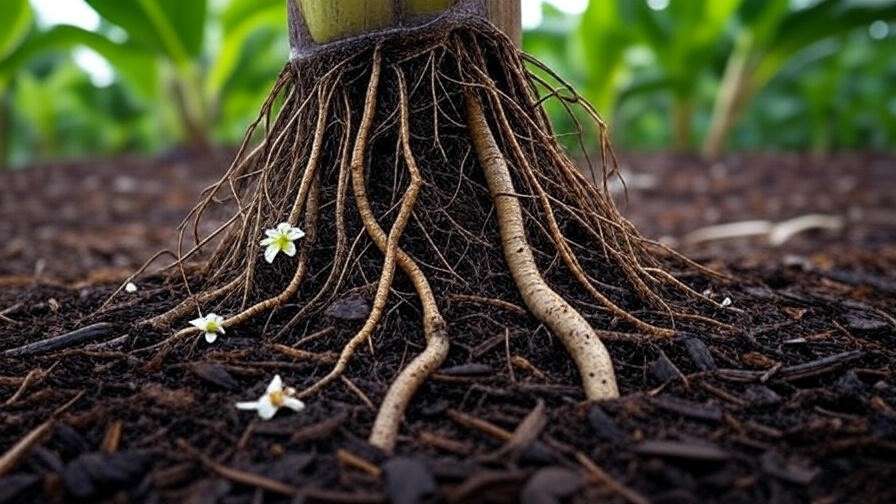
Soil Preparation and Planting Steps
- Test Soil pH: Musa trees prefer slightly acidic to neutral soil (pH 5.5-7.0). Use a soil test kit to confirm.
- Enrich Soil: Amend with compost or well-rotted manure to boost organic matter.
- Dig the Hole: Make it twice as wide and as deep as the root ball (about 12-18 inches).
- Plant: Place the tree so the pseudostem base is level with the soil surface. Backfill and tamp gently.
- Mulch: Apply 2-3 inches of organic mulch (e.g., bark or straw) to retain moisture and regulate soil temperature.
- Water Thoroughly: Soak the soil to encourage root establishment.
Case Study: Sarah, a Florida gardener, planted a Musa ‘Dwarf Cavendish’ in a sunny, well-drained spot enriched with compost. Within 15 months, she harvested her first bunch of bananas, proving the power of proper site selection.
Tip 3: Watering and Fertilizing for Vigorous Growth 💧
Watering Needs
Musa banana trees are thirsty plants, requiring consistent moisture to thrive. Water deeply 2-3 times per week, ensuring the soil stays moist but not soggy. In hot climates, daily watering may be necessary during dry spells. Signs of Trouble: Yellowing leaves indicate overwatering, while wilting or browning tips suggest underwatering. Adjust based on weather and soil drainage. Use a moisture meter for precision.
Fertilizing for Maximum Health
Banana trees are heavy feeders, needing nutrient-rich soil to support rapid growth. Apply a balanced fertilizer (e.g., 10-10-10 or 8-10-8) high in potassium every 4-6 weeks during the growing season (spring to fall). Organic options like fish emulsion or compost tea work well for eco-conscious gardeners. Avoid fertilizing in winter when growth slows. Expert Tip: Spread fertilizer in a ring 12-18 inches from the pseudostem to target the root zone.
Tip 4: Protect Your Musa Banana Tree from Pests and Diseases 🐞
Musa banana trees face threats from pests like aphids, spider mites, and banana weevils, as well as diseases such as Panama disease (Fusarium wilt) and leaf spot. Prevention Strategies:
- Inspect Regularly: Check leaves and stems for signs of pests or discoloration.
- Maintain Airflow: Space plants 6-10 feet apart to reduce humidity and fungal risk.
- Use Organic Controls: Neem oil or insecticidal soap can manage aphids and mites.
- Sanitize Tools: Prevent disease spread by cleaning pruning tools with alcohol.
For Panama disease, choose resistant varieties like Musa ‘FHIA-21’. If root rot occurs, improve drainage and reduce watering. Case Study: John, a Texas gardener, saved his Musa tree from leaf spot by applying copper-based fungicide and removing affected leaves, restoring its health within weeks.
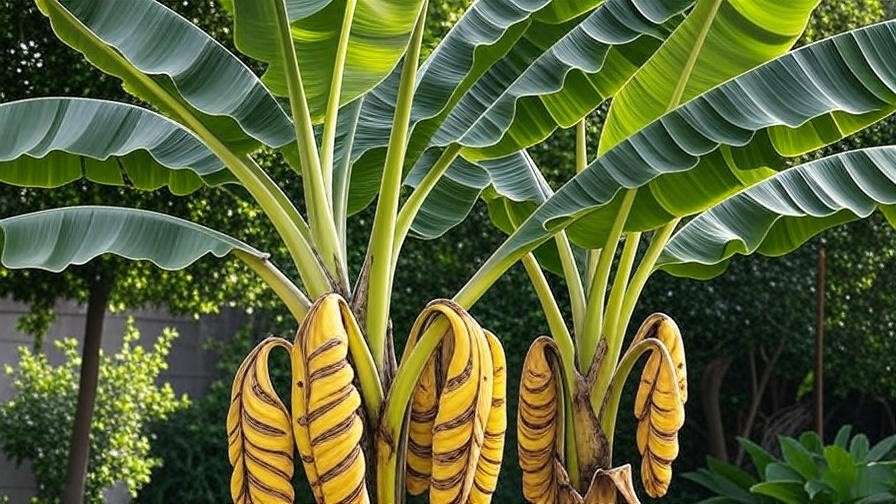
Tip 5: Prune and Maintain Your Banana Tree for Longevity ✂️
Pruning is essential for keeping your Musa banana tree healthy, productive, and visually appealing. Regular maintenance promotes fruit production, removes dead or damaged foliage, and prevents disease spread. Here’s how to do it right:
- Why Prune? Musa banana trees produce new leaves from the pseudostem, but older leaves can become tattered or diseased. Pruning encourages energy allocation to fruiting and new growth. It also improves airflow, reducing fungal risks.
- When to Prune: Prune during the growing season (spring to early fall) when the plant is actively growing. Avoid heavy pruning in winter to prevent stress.
- Tools Needed: Use sharp, sanitized pruning shears or a pruning saw for thicker pseudostems. Clean tools with rubbing alcohol between cuts to avoid disease transmission.
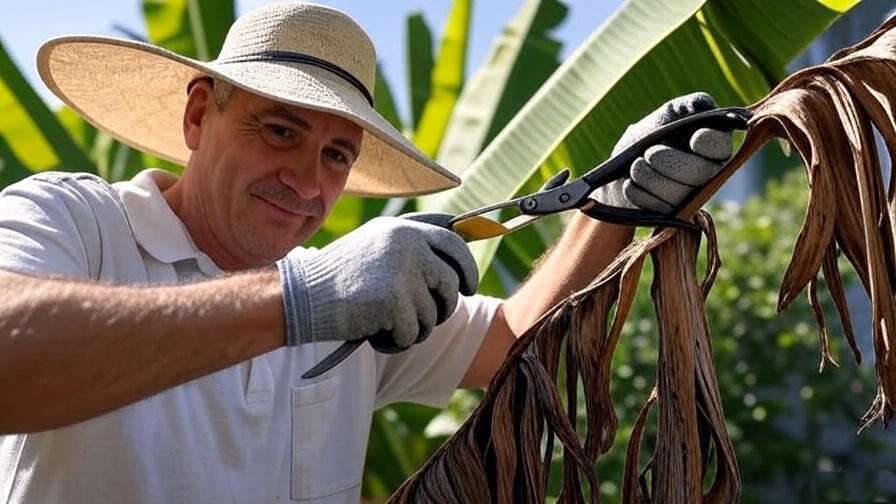
Step-by-Step Pruning Guide
- Remove Dead Leaves: Cut brown or yellow leaves at the base where they meet the pseudostem.
- Trim Suckers: Musa trees produce suckers (new shoots) around the base. Keep 1-2 healthy suckers for future growth and remove others to prevent overcrowding.
- Cut Spent Stems: After fruiting, the main pseudostem dies. Cut it back to 6-12 inches above the ground to encourage new suckers.
- Shape for Aesthetics: Trim tattered leaf edges for a tidy appearance, but avoid over-pruning healthy foliage.
Maintenance Checklist:
- Check for pests or disease weekly.
- Remove debris around the base to deter pests.
- Stake young trees in windy areas to prevent toppling.
Expert Insight: Dr. Maria Gonzalez, a tropical plant specialist, advises, “Pruning Musa banana trees is like giving them a haircut—strategic cuts enhance vigor and ensure a bountiful harvest.” Regular maintenance keeps your tree thriving for years.
Tip 6: Overwintering and Indoor Care for Musa Banana Trees ❄️
In colder climates (below USDA zone 9), Musa banana trees need protection to survive winter. For gardeners in temperate regions, overwintering strategies or indoor care can keep your tree healthy until spring.
Overwintering Outdoors
- Mulch Heavily: Apply a 6-12 inch layer of organic mulch (straw, bark, or leaves) around the base to insulate roots.
- Wrap the Pseudostem: Use burlap or frost cloth to cover the pseudostem, securing it with twine. For extra protection, add straw or leaves inside the wrap.
- Cut Back Foliage: Trim leaves to 12 inches before wrapping to reduce wind resistance.
Indoor Care for Potted Musa Trees
- Choose a Dwarf Variety: Varieties like Musa ‘Dwarf Cavendish’ or Musa ‘Super Dwarf’ are ideal for containers.
- Lighting: Place in a south-facing window with 6-8 hours of bright, indirect light. Supplement with grow lights if needed.
- Humidity: Maintain 50-60% humidity using a humidifier or pebble tray.
- Watering: Reduce watering to once every 10-14 days, allowing the top inch of soil to dry out.
Troubleshooting Indoor Issues:
- Yellowing Leaves: Often caused by low light or overwatering. Adjust light exposure and check soil drainage.
- Stunted Growth: Ensure adequate fertilization and warmth (65-80°F).
Success Story: Emma, a gardener in Ohio, successfully grew a Musa ‘Dwarf Cavendish’ indoors by placing it under a grow light and maintaining high humidity. Her tree produced fruit in its second year, proving indoor Musa care is achievable with dedication.
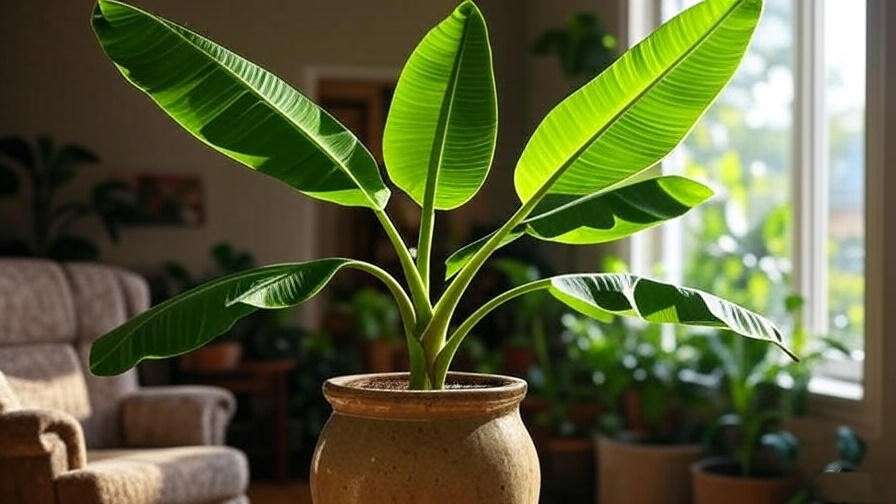
Tip 7: Harvesting and Enjoying Your Banana Tree’s Bounty 🍌
Harvesting homegrown bananas is the ultimate reward for your efforts. Knowing when and how to harvest ensures the best flavor and encourages future growth.
When to Harvest
- Signs of Ripeness: Bananas are ready when they turn from green to yellow (or slightly green for some varieties) and feel firm but not hard. The fruit should be plump, with rounded edges.
- Timing: Most Musa varieties take 9-18 months from planting to fruiting, depending on climate and care. Harvest before the first frost in cooler regions.
How to Harvest
- Cut the Bunch: Use a sharp knife to cut the entire fruit stalk (bunch) just above the topmost banana.
- Handle Gently: Bananas bruise easily, so support the bunch while cutting.
- Ripen Off the Plant: Hang the bunch in a warm, shaded area to ripen fully (70-80°F).
Post-Harvest Care
- Remove the Spent Stem: After harvesting, cut the fruiting pseudostem to 6-12 inches to encourage new suckers.
- Maintain Soil Health: Add compost to replenish nutrients for the next growth cycle.
Creative Uses for Homegrown Bananas
- Smoothies: Blend with berries, yogurt, and honey for a tropical treat.
- Baking: Use ripe bananas in banana bread or muffins.
- Grilling: Grill banana halves with cinnamon for a caramelized dessert.
Expert Tip: To extend shelf life, store bananas in a cool, dry place (55-60°F) away from other fruits, which release ethylene gas and speed ripening.

Troubleshooting Common Musa Banana Tree Problems 🛠️
Even with the best care, Musa banana trees may face challenges. Below is a table of common issues, causes, and solutions to keep your tree thriving.
| Issue | Cause | Solution |
| Yellowing Leaves | Overwatering, low light, or nutrient deficiency | Adjust watering, increase light, or fertilize |
| No Fruit Production | Insufficient sunlight or young plant | Ensure 6-8 hours of sun; wait 9-18 months |
| Wilting or Drooping | Underwatering or root rot | Check soil moisture; improve drainage |
| Torn Leaves | Strong winds | Provide windbreaks or stake the tree |
Proactive Care Tips:
- Conduct monthly inspections for early signs of trouble.
- Rotate potted plants to ensure even light exposure.
- Test soil regularly to maintain optimal pH and nutrients.
Expert Insight: Botanist Dr. Alan Chen notes, “Most Musa issues stem from environmental imbalances. Consistent care and early intervention can prevent 90% of problems.”
FAQs About Growing Musa Banana Trees ❓
Q1: How long does it take for a Musa banana tree to bear fruit?
A: Most Musa varieties produce fruit within 9-18 months, depending on variety, climate, and care. Ensure optimal sunlight and nutrition to speed up the process.
Q2: Can I grow a Musa banana tree in a pot indoors?
A: Yes! Dwarf varieties like Musa ‘Dwarf Cavendish’ thrive in pots with bright light, high humidity, and well-draining soil. Use a 15-20 gallon container for best results.
Q3: What’s the best way to protect my banana tree from wind damage?
A: Plant in a sheltered location, use windbreaks (e.g., fences or shrubs), or stake young trees. Wrapping leaves during storms can also help.
Q4: Why is my Musa banana tree not producing fruit?
A: Common reasons include insufficient sunlight, young plants, or nutrient deficiencies. Ensure 6-8 hours of sun and regular fertilization with potassium-rich blends.
Q5: Are Musa banana trees safe for pets?
A: Musa banana trees are non-toxic to cats and dogs, but avoid letting pets chew on leaves, as they may cause mild digestive upset.
Conclusion: Grow Your Own Tropical Oasis with Confidence 🌴
Growing a Musa banana tree is a rewarding journey that brings tropical beauty and delicious fruit to your garden. By following these seven essential tips—choosing the right variety, planting strategically, watering and fertilizing properly, protecting against pests, pruning regularly, overwintering wisely, and harvesting at the perfect time—you’ll ensure a thriving tree that transforms your space. Backed by expert insights and practical advice, this guide equips you with everything needed to succeed, whether you’re in a tropical paradise or a temperate backyard. Start your Musa banana tree journey today and share your success stories in the comments! 🌱
Call-to-Action: Download our free Musa Banana Tree Care Checklist (PDF) to keep your tree thriving year-round. Try a recommended variety like Musa ‘Dwarf Cavendish’ and watch your garden bloom!

